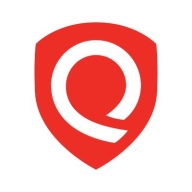

Find out what your peers are saying about Darktrace, Vectra AI, Trend Micro and others in Network Detection and Response (NDR).
| Product | Market Share (%) |
|---|---|
| ExtraHop Reveal(x) | 8.2% |
| Qualys Multi-Vector EDR | 0.3% |
| Other | 91.5% |

| Company Size | Count |
|---|---|
| Small Business | 3 |
| Midsize Enterprise | 4 |
| Large Enterprise | 9 |
ExtraHop Reveal(x) is a highly effective network traffic analysis (NTA) solution that leverages a cloud-native architecture to empower organizations to overcome a world filled with increasingly sophisticated threats. It identifies 25% more threats than its competitors. Additionally, organizations that employ Reveal(x) say they resolve issues 77% percent faster than they would if they were using other similar solutions.
ExtraHop Reveal(x) Benefits
Some of the ways that organizations can benefit by choosing to deploy ExtraHop Reveal(x) include:
ExtraHop Reveal(x) Features
Reviews from Real Users
ExtraHop Reveal(x) is a solution that stands out when compared to many other similar solutions. Two major advantages that it offers are its versatility and its ability to quickly identify the root cause of an application’s issues.
John B., the senior monitoring engineer at a financial services firm, says, “It's useful for different teams in our organization. The cybersecurity team uses it because it has got great analytics for anomaly detection, malware detection, and ransomware. It's used by the networking people because it's great to be able to get the three-way handshake between systems to see how your network is doing. The microservices for DNS use it because they like to be able to see how their DNS services are operating and how many DNS requests are being rejected, denied, or dropped. Application people love it because it fully decrypts their traffic.
Henry S., a systems engineer at LifePoint Health, writes, "When there are performance issues with an HTTP app, ExtraHop enables us to identify the causes within a few minutes. We can see what transactions are being impacted by something that may be happening within the server environment."
Qualys Multi-Vector EDR is designed for real-time threat detection and response, offering comprehensive visibility into potential security breaches across endpoints.
This solution integrates seamlessly with other Qualys modules, facilitating automated workflows that streamline incident management and enhance efficiency in monitoring and mitigating cyber threats. With features like real-time monitoring, detailed reporting, and proactive alerting, security teams can quickly identify and address vulnerabilities. While appreciated for its scalability and ease of deployment, users suggest improvements in integration, reporting, and configuration to further enhance its capabilities.
What are the key features of Qualys Multi-Vector EDR?Qualys Multi-Vector EDR is implemented across industries such as finance, healthcare, and retail, where real-time threat detection and automated response are critical. Its ability to integrate with existing systems and provide detailed reporting makes it a valuable asset for enhancing cybersecurity measures in diverse environments.
We monitor all Network Detection and Response (NDR) reviews to prevent fraudulent reviews and keep review quality high. We do not post reviews by company employees or direct competitors. We validate each review for authenticity via cross-reference with LinkedIn, and personal follow-up with the reviewer when necessary.